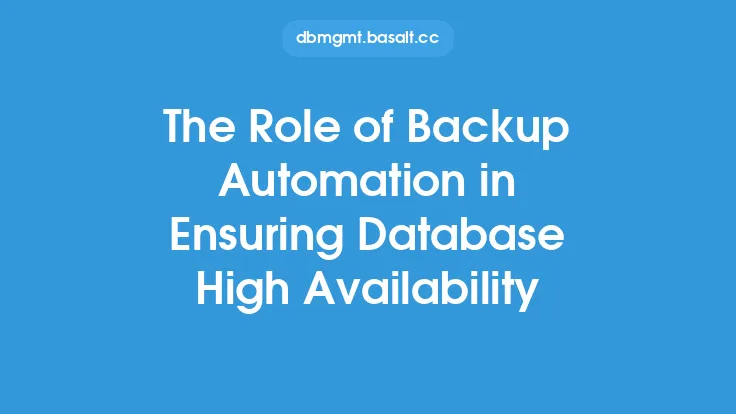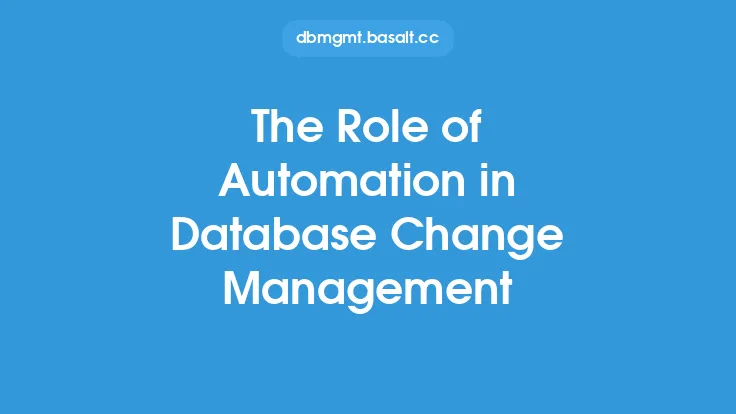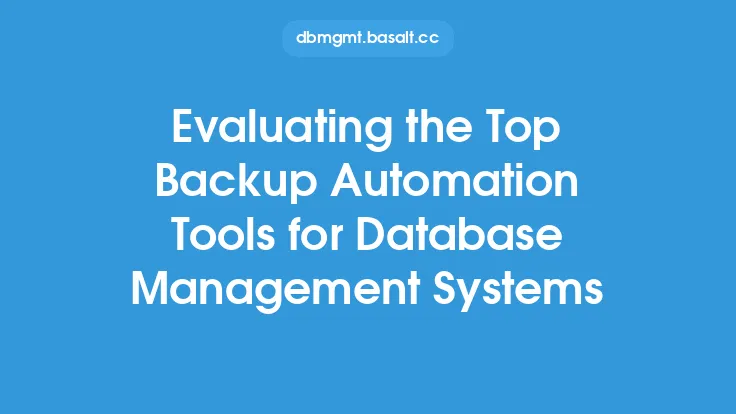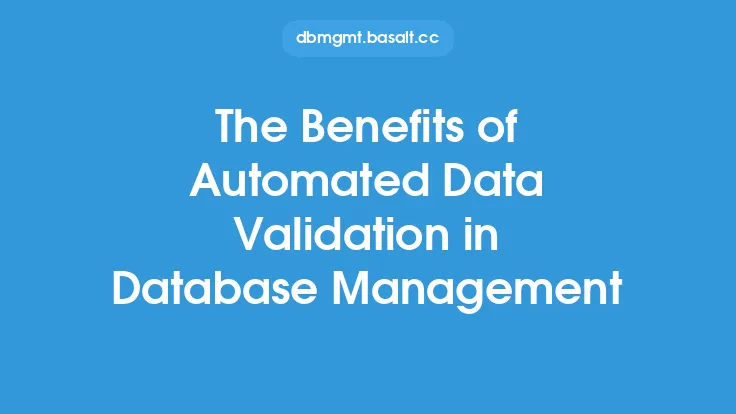Implementing backup automation in database management is a crucial step towards ensuring the integrity and availability of critical data. In today's fast-paced digital landscape, databases are the backbone of most organizations, storing sensitive information that is essential for daily operations. However, the ever-present risk of data loss due to hardware failures, software corruption, or human error can have devastating consequences. This is where backup automation comes into play, offering a reliable and efficient solution for protecting database assets.
Introduction to Backup Automation
Backup automation refers to the process of using specialized software tools to automatically create and manage backups of database systems. These tools can be configured to run at scheduled intervals, ensuring that backups are performed consistently and without manual intervention. By automating the backup process, database administrators can minimize the risk of data loss and ensure that backups are always up-to-date and readily available for recovery.
Benefits of Backup Automation
The benefits of implementing backup automation in database management are numerous. Firstly, it ensures consistency and reliability in the backup process, eliminating the risk of human error or forgetfulness. Automated backups can be scheduled to run at optimal times, such as during periods of low database activity, to minimize the impact on system performance. Additionally, backup automation tools can be configured to perform incremental backups, which only capture changes made since the last backup, reducing storage requirements and improving backup efficiency.
Technical Advantages of Backup Automation
From a technical perspective, backup automation offers several advantages. For instance, automated backups can be performed at the block level, which enables faster and more efficient backups compared to traditional file-level backups. Moreover, backup automation tools can be integrated with database management systems to leverage features such as snapshotting and cloning, which enable rapid recovery of database systems in the event of a failure. Furthermore, automated backups can be stored in a variety of formats, including compressed and encrypted files, to ensure data integrity and security.
Data Protection and Recovery
One of the primary benefits of backup automation is the enhanced level of data protection it provides. By creating regular backups of database systems, organizations can ensure that critical data is always available for recovery in the event of a disaster or data loss. Automated backups can be stored on-site or off-site, depending on the organization's disaster recovery strategy, and can be easily retrieved and restored in the event of a failure. Moreover, backup automation tools can be configured to perform automated recovery operations, which enables rapid restoration of database systems and minimizes downtime.
Scalability and Flexibility
Backup automation tools are designed to be scalable and flexible, making them suitable for organizations of all sizes. These tools can be easily integrated with existing database management systems and can be configured to meet the specific backup and recovery needs of the organization. Moreover, backup automation tools can be used to manage backups of multiple database systems, including relational databases, NoSQL databases, and cloud-based databases. This enables organizations to standardize their backup and recovery processes across different database platforms and ensures consistency in data protection.
Best Practices for Implementing Backup Automation
To ensure the effective implementation of backup automation, organizations should follow best practices such as scheduling regular backups, testing backup and recovery operations, and monitoring backup jobs for errors or failures. Additionally, organizations should ensure that backup automation tools are properly configured and integrated with existing database management systems. It is also essential to establish a clear backup and recovery strategy, which outlines the procedures for creating, storing, and recovering backups, as well as the roles and responsibilities of database administrators and other stakeholders.
Conclusion
In conclusion, implementing backup automation in database management is a critical step towards ensuring the integrity and availability of critical data. By automating the backup process, organizations can minimize the risk of data loss, ensure consistency and reliability in backups, and improve overall data protection and recovery capabilities. With the numerous benefits and technical advantages of backup automation, organizations can rest assured that their database assets are protected and readily available for recovery in the event of a disaster or data loss. As database systems continue to evolve and become increasingly complex, the importance of backup automation will only continue to grow, making it an essential component of any comprehensive database management strategy.





